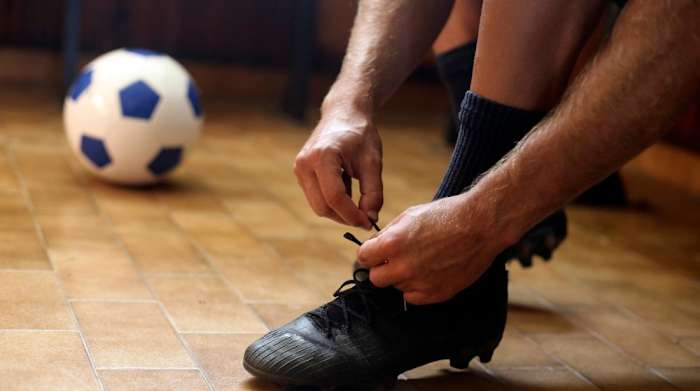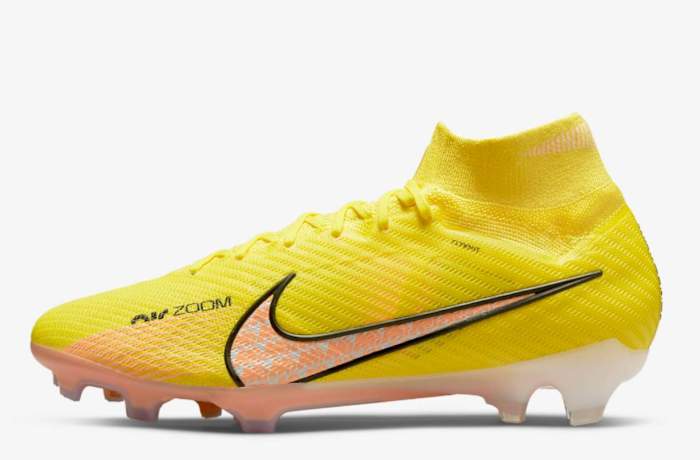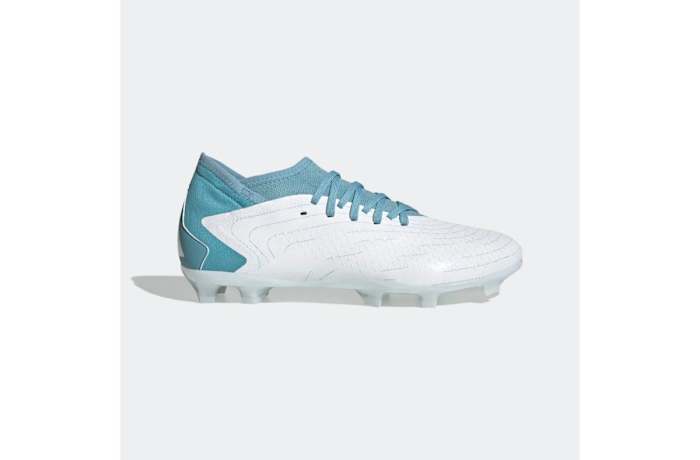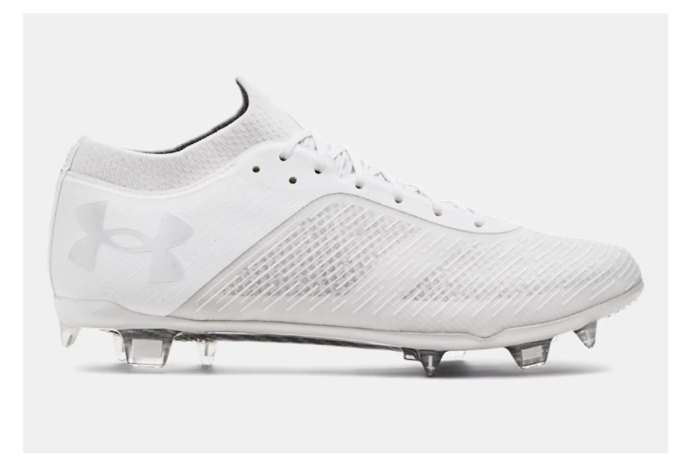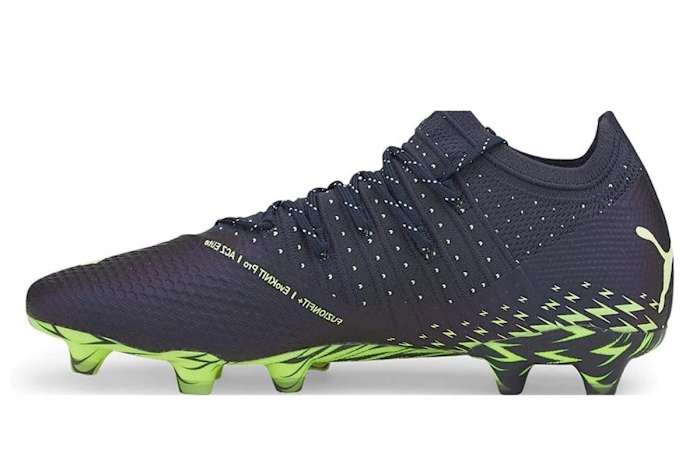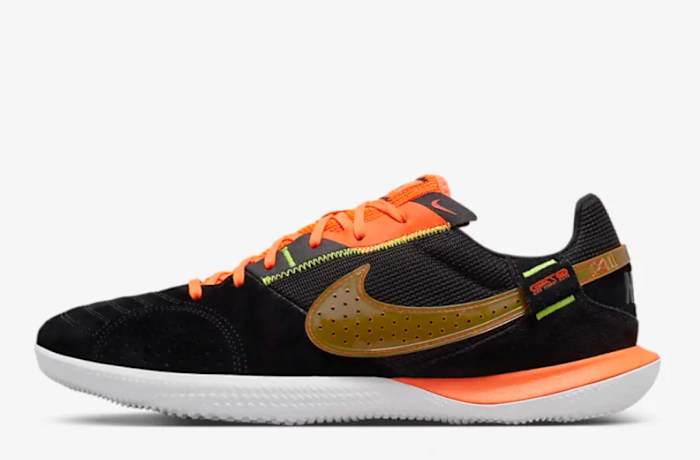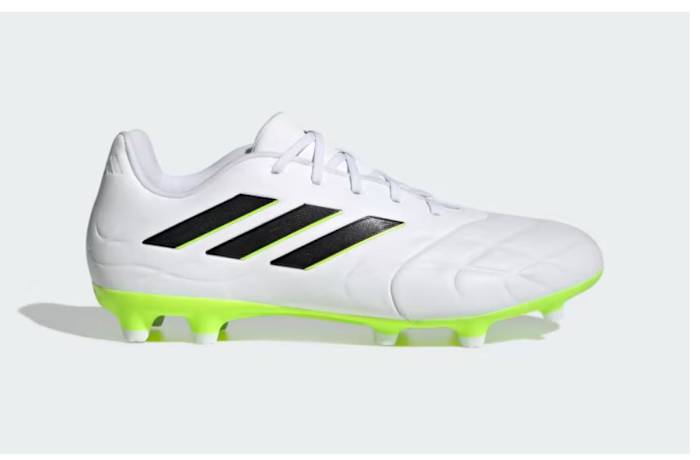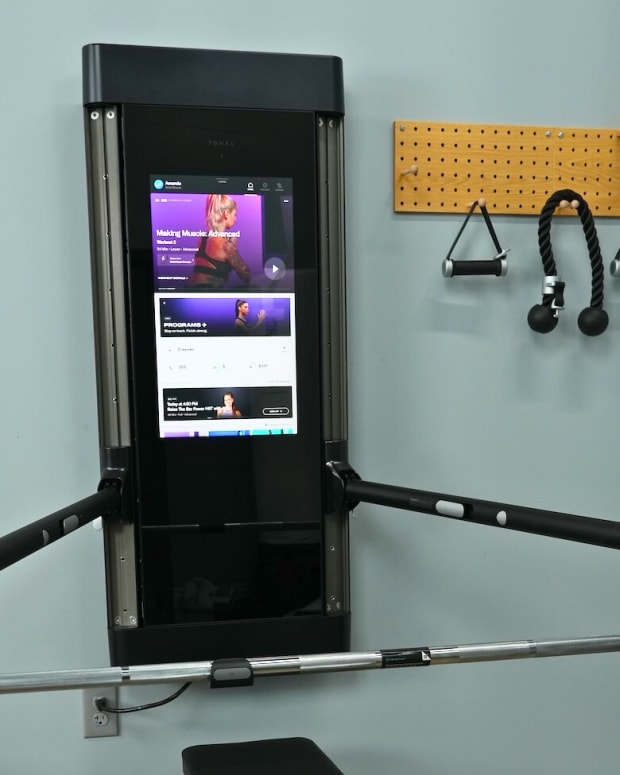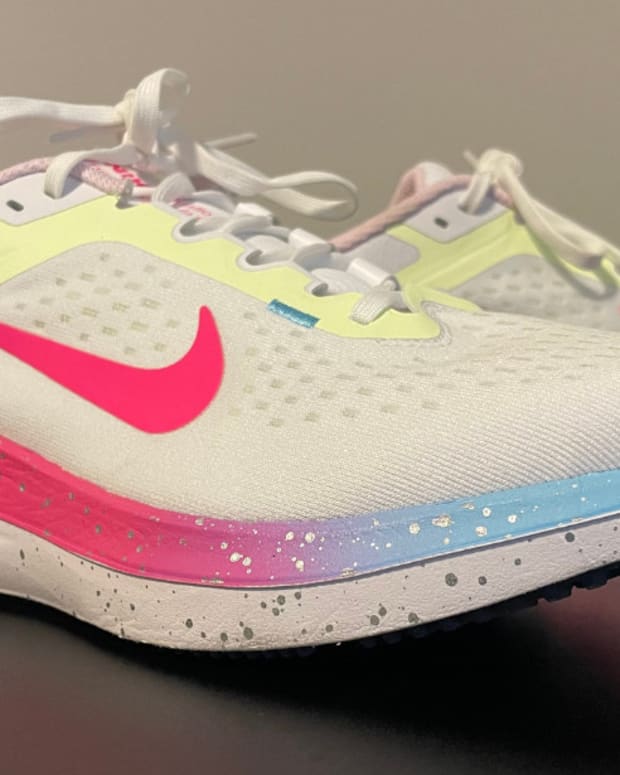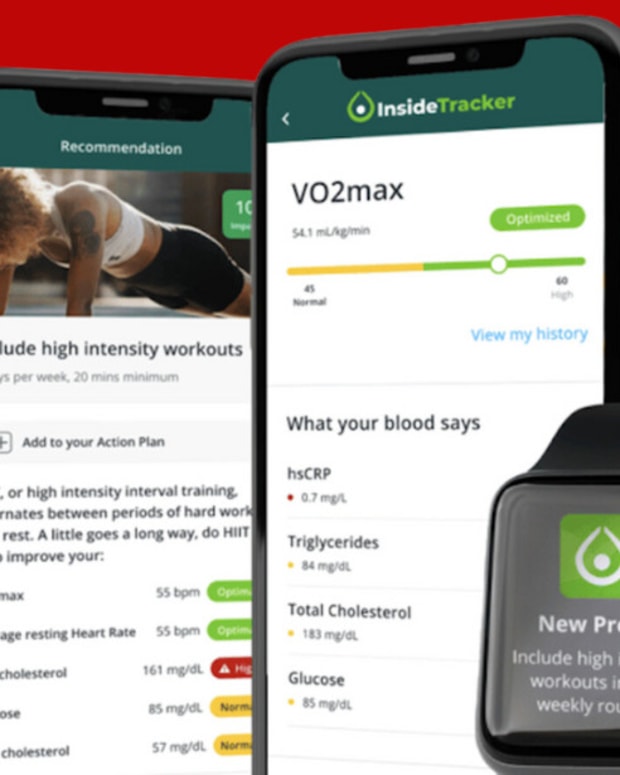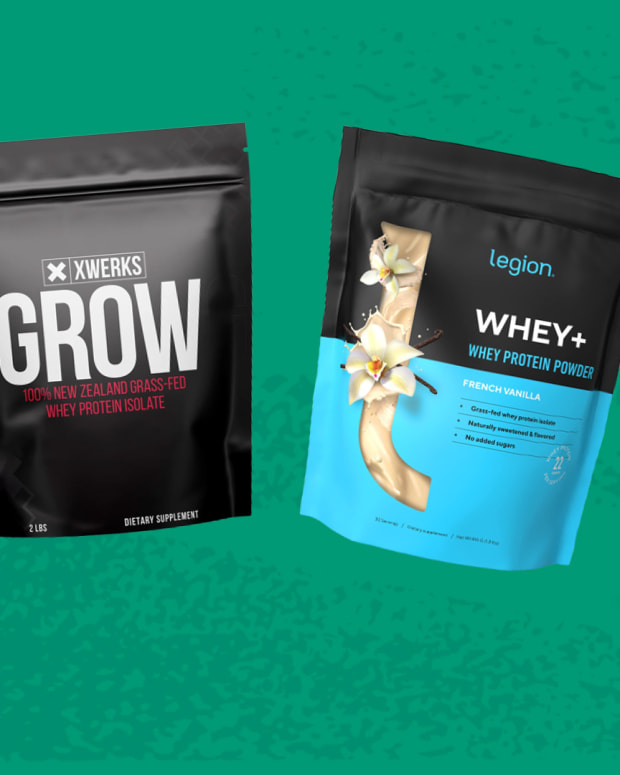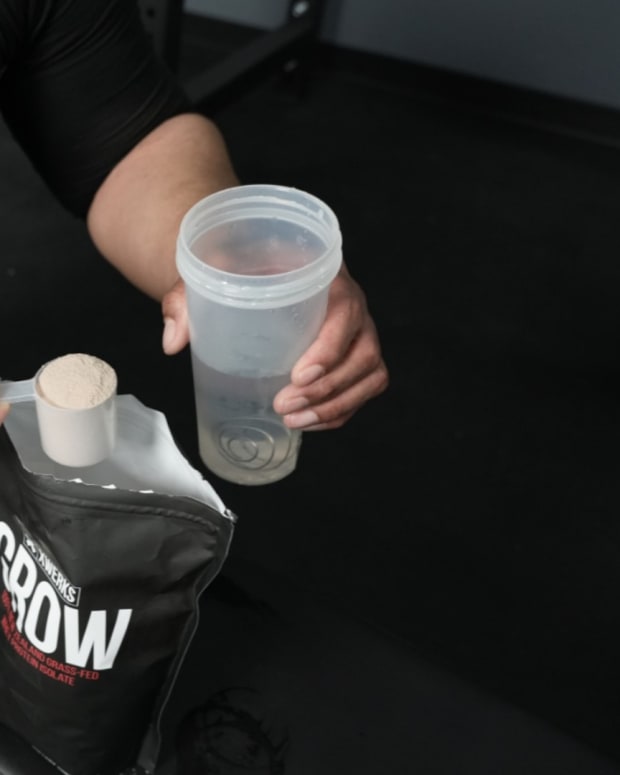The products featured in this article have been independently reviewed. When you buy something through the retail links on this page, we may earn commission at no cost to you, the reader. Sports Illustrated editorial staff are not involved in the creation of this content. Learn more here.
If you’re shopping for the best soccer cleats for the first time, the wealth of options can seem overwhelming. Fear not, as we’ve put in the time and research to build a comprehensive guide to soccer cleats so you can make a confident buying decision. Whether you’re planning on playing on a field, on turf or indoors, there are plenty of excellent options with slick features to help you play with comfort and style. We’ll also provide a few expert tips on how to find the right cleats for your needs in 2024.
Our Picks for the Best Soccer Cleats of 2024:
- Best Overall Soccer Cleats: adidas Predator Accuracy.1 Firm Ground
- Best Soccer Cleats for Turf: Nike Zoom Mercurial Superfly 9 Elite FG
- Best Soccer Cleats Under $100: adidas Predator Accuracy.3 FG
- Best Nike Soccer Cleats: Nike Zoom Mercurial Superfly 9 Elite FG
- Best Under Armour Soccer Cleats: Unisex UA Shadow Pro FG
- Best Men’s Soccer Cleats: Puma Men’s Future Z 1.4 FG
- Best Women’s Soccer Cleats: Nike Streetgato
- Best Soccer Cleats for Wide Feet: adidas Copa Pure II.3 Firm
- Best Soccer Cleats for Kids: Nike Jr. Zoom Mercurial Superfly 9 Pro
Best Overall Soccer Cleats: adidas Predator Accuracy.1 Firm Ground
Key Features:
- Price: $250
- HybridTouch upper
- adidas PRIMEKNIT collar
Due to the intentionally placed grip technology, the adidas Predator Accuracy.1 Firm Ground Soccer Cleats won our top pick as the best soccer cleat. The HybridTouch upper hugs your feet to keep them comfortable as you sprint down the field, and it has a thin top layer to create a better feel for the ball.
The stretchy PRIMEKNIT collar offers adaptive support for the athlete. There is also a weighted outsole on the adidas Predator Accuracy.1 Firm Ground Soccer Cleats to help the athlete with kicking accurate and powerful goals.
Reviewers on the adidas website seem to agree that the adidas Predator Accuracy.1 Firm Ground Soccer Cleats are a great purchase. One reviewer says “ Excellent grip on the playing surface and very comforting to my feet.” Along with this reviewer, many other reviewers mention the comfort of the cleat and say that the cleats did not even need breaking in.
Pros:
- Heel, midsole and collar offer support
- Thin upper layer to “feel” the ball
- Lace closure
Cons:
- May be too narrow for some
Best Soccer Cleats for Turf: Nike Zoom Mercurial Superfly 9 Elite FG
Key Features:
- Price: $275
- 3/4 Zoom Airbag
- Vaporsite+ Upper Material
The Nike Zoom Mercurial Superfly 9 Elite FG cleat features airy comfort, inside cushioning and tri-star studs. One of the many unique features of this cleat is the incorporation of the Zoom technology, which is designed to make the shoe incredibly comfortable. Plus, The lightweight midsole features boosted cushioning that delivers springy responsive energy upon impact and helps propel you forward on the turf—a soccer player’s dream. According to one reviewer, the studs assist to “provide multidirectional traction with every step.”
One of the main downsides reported by customers is that the Nike Mercurial cleat requires some time to break in. However, we can’t think of a shoe that doesn’t require some length of break-in time. Overall, we recommend spending some time wearing these cleats around the house before you play your first game to optimize your comfort.
Pros:
- Snappy, propulsive feel
- Grippy upper
- Lightweight materials
Cons:
- One of the most expensive on the market
Best Soccer Cleats Under $100: adidas Predator Accuracy.3 FG
Key Features:
- Price: $95
- Firm ground Speedframe outsole
- Coated textile upper
At such a low price, you can't help but love what the adidas Predator Accuracy.3 FG soccer cleats offer. Influenced by the original adidas x Parley shoe, this shoe integrates recycled materials into the design. The yarn upper is at least 50 percent reimagined plastic waste, and the other 50 percent is recycled polyester.
These soccer cleats have a 3D coated textile upper with strategically placed grooves for touch and control. The unique stud configuration of the outsole ensures grip and traction while playing on firm ground.
On the underside, the firm ground outsole is super lightweight and provides 12 studs, with eight on the forefoot and four on the heel. As for aesthetics, there are a few unique colorways to choose from, depending on your style.
We wouldn’t recommend these cleats to those playing long games, as the upper is on the thick side and not the most flexible. Serious players may find their feet hurt after wearing these firm ground soccer cleats during intense games.
Pros:
- Textured upper helps with grip and control
- Firm ground outsole has decent traction
- Lightweight, recycled materials
Cons:
- Thick upper may feel stiff at first
Best Nike Soccer Cleats: Nike Zoom Mercurial Superfly 9 Elite FG
Key Features:
- Price: $275
- 3/4 Zoom Airbag
- Vaporsite+ Upper Material
Nike has been updating the Mercurial line for years now. Honestly, this is one of the best updates they’ve done thus far, as these shoes feature several key elements that set them apart from other soccer cleats on the market.
The new speed cage provides an optimal fit with a locked-down feeling that we haven’t experienced with other cages. The material is super pliable, allowing you to move your feet around naturally, all without added weight. For comfort, however, Nike added a padded layer to the heel portion of the cleats.
On top, you’ll find the Vaporsite material, which Nike introduced with the release of the Mercurial 8. They’ve taken it a step up from the last iteration of the material, which felt like rigid plastic. Its reduced thickness without a compromise in durability is very surprising.
What truly piqued our interest was the 3/4 Zoom Airbag, which provides a slight bit of added spring in the center sole. The sense of propulsive energy you get from these shoes is truly outstanding and it once again shows how much Nike emphasizes its focus on functionality.
Related Post: The Best Nike Shoes for Men
Pros:
- Snappy, propulsive feel
- Grippy upper
- Lightweight materials
Cons:
- One of the most expensive on the market
Best Under Armour Soccer Cleats: Unisex UA Shadow Pro FG
Key Features:
- Price: $200.00
- Weighs 8.6 oz.
- Ankle support from sock-like fit
The relationship between Under Armour and soccer has always waivered, as it seems like the company was never totally sure how to approach making products for the sport. However, the Under Armour Shadow Pro FG Soccer Cleats were one of the most underrated products to come out of Under Armour’s soccer line over the past few years.
The shoe has a design that includes a three-point cage which secures the foot in place and provides stability when running across the field. The Under Armour Shadow Pro FG Soccer Cleats also have a sock-like feel which helps with ankle support and makes the shoe more comfortable to wear because of the soft material.
A reviewer on the Under Armour website says that they are “Seriously impressed with the tech on these, like I legit never come down to these review pages but I just had to get it out there how blown away I am by these boots, the Intelliknit is some really impressive tech. It forms around your foot perfectly, right down to the shape of your toes.”
Pros:
- Ultra-responsive, Charged Cushioning® footbed
- Stable
- Form-fitting materials
Cons:
- Only offered in two colors
Best Men’s Soccer Cleats: Puma Men’s Future Z 1.4 FG
Key Features:
- Price: $199
- FUZIONFIT+ compression band
- Z soleplate
The Puma Future, as with many other football boots, has gone through several iterations. However, the company took a big risk by modifying its flagship boot.
One thing to note is that the perfect fit is still there. Thanks to the adaptive FUZIONFIT+ compression band, these cleats accommodate just about any foot shape. It’s clear that Puma was pretty confident about this band, as they completely removed any lace loops around where the band is placed. You get solid lockdown and security with mobility compromise.
The Puma Future Z 1.4 is also the thinnest boot yet. It almost has a sock-like fit. You’ll find exposed Evoknit material around the mouth and tongue with a soft and stretchy feel and some light padding around the forefoot and heel for a slight bit of additional protection.
One thing that is worth noting is that we’re not huge fans of the plastic coating, as it makes the shoes feel a bit too plasticky. However, with excellent mobility and a high-quality compression band that’ll provide you with comfort like you’ve never felt before, it’s a truly solid soccer cleat.
Pros:
- Comfortable compression band
- Sock-like upper materials
- Easy to put on
Cons:
- Plastic coating is uncomfortable
Related Post: The Best Training Shoes
Best Women’s Soccer Cleats: Nike Streetgato
Key Features:
- Price: $85
- Suede and mesh upper
- Mounted lacing system
While the Nike Streetgato might appear more like a lifestyle sneaker, it’s still one of our favorite soccer cleats for playing on indoor courts. The original Streetgato came out more than ten years ago and the upgrades have consistently been stylish and comfortable.
The mesh and suede upper are super comfortable and breathable, while the synthetic lining feels soft on the feet. You get plenty of support, a solid lacing system and a firm heel.
If you’re on a budget or want a soccer shoe that you can rock around town when you’re not playing, the Nike Streetgato indoor soccer shoes are an excellent option.
However, if you’re in the market for a truly battle-ready option, we might recommend looking elsewhere.
Pros:
- Comfortable upper
- Supportive design
- Plush cushioning
Cons:
- Heel can feel a bit chunky
Related: The Best Running Shoes for Women
Best Soccer Cleats for Wide Feet: adidas Copa Pure II.3 Firm
Key Features:
- Price: $80
- Lace closure
- Leather upper
While the adidas Copa Pure II.3 Firm Ground Cleats might be one of the company’s lesser-known soccer shoes, it’s a hidden gem, perfect for those who struggle to find cleats that fit their wide feet.
Right out of the box, buyers seem to think the leather upper looks great, the fit is comfortable and the look is nothing short of classic. The simple design features are perfect for those who want something that’s not too flashy.
The real selling point with the adidas Copa Pure II.3 Firm Ground Cleats
is the width. A reviewer on the adidas website says that "They are good cleats I have been buying cleats for a while trying to find cleats that are wide and comfortable and my coach told me about the cleats so I got them and they feel amazing 100% would recommend for anyone with wide feet."
The adidas Copa Pure II.3 Firm Ground Cleats are a great option if you are looking for a wide,budget-friendly and classic cleat.
Pros:
- Great for wide feet
- Durable leather material
- Budget-friendly
Cons:
- Some reviewers say the sole is easily broken
Best Soccer Cleats for Kids: Nike Jr. Zoom Mercurial Superfly 9 Pro
Key Features:
- Price: $120
- Zoom Airbag design
- Vaporsite+ Upper
So, Nike finally came out with some laceless cleats for kids and they’re absolutely killer! You get many of the same design features you get with the adult Mercurial Superfly 9s as well, including the Zoom airbag for added snap and propulsion and the redesigned Vaporsite+ material for grip.
While your youngsters might love the feel and flexibility of these shoes, as they provide freedom to run around the feel for hours without comfort issues, we’re sure they’ll love the bright color options even more.
Pros:
- Great for ball control
- Super comfortable material
- Integrated Airbag for propulsion
Cons:
- Relatively expensive for junior cleats
What Are Soccer Cleats?
Soccer cleats are soccer game-specific footwear that comes with studs (small protrusions) on the bottoms to provide traction and grip as you move about the field. Cleats have been around for over a century, though they’ve changed quite drastically over the years.
How Should Soccer Cleats Fit?
When it comes to buying soccer cleats, one of the most important factors to consider is the fit.
Before you dive into finding soccer cleats, it’s a good idea to get in touch with your own feet. Ask a few questions, such as:
- Do I have wide or narrow feet?
- Is my arch flat or high?
- What is my preferred shoe size?
When trying on cleats, keep in mind that they should fit snugly. If you read our reviews above, you’d know that we praise shoes with snug, glove-like fits.
So, for example, if you wear a size 9 running shoe, your best bet would be to look for a soccer cleat a size down at 8.5. Beyond security, a tight fit can provide you with optimal ball touch and feel.
You want to make sure your soccer cleat fits close to the ends of your toes. If your cleats are too big, you risk injury and reduce comfort and feel.
With that said, the end shouldn’t touch your toes either. As a rule of thumb, look for a one-quarter inch gap for comfort. On the other hand, if you’re buying cleats for your child, consider the fact that they still probably have some growing to do. You can look for a half an inch gap instead, which typically equates to a half size up from what you’d normally buy.
Note that most soccer cleats utilize narrow designs, as manufacturers often prioritize snug fits. There are a few exceptions to this, however. New Balance, for example, offers a wide fit line and most adidas cleats tend to run wide.
With all of that said, the best thing you can do is head down to your local sporting goods store and try different cleats to see which ones feel best. It may surprise you which ones you like the most.
Should Soccer Cleats Be Loose or Tight?
Because it’s such a popular question, we figured we’d answer it twice to drill it in. Soccer cleats should fit tight! The last thing you want is to feel like you’re slipping out of your shoes as you move around the field.
Should You Buy Soccer Cleats a Size Bigger?
We typically recommend buying soccer cleats a size down, if possible. For example, if you wear a size 10 running shoe, you might consider buying a size 9.5 cleat.
As we said before, you want a snug fit. If you buy a size up, you’ll have cleats that are too loose, which can put you at a higher risk of injury.
Why Do Soccer Players Wear Two Pairs of Socks?
If you’ve ever seen soccer players wear two pairs of socks when playing, there are a few reasons for doing so.
For starters, two pairs of socks provide an extra layer of protection.
In the past decade, the use of synthetic fiber in soccer cleats has grown. While the material is super lightweight and comfortable, it doesn’t provide much protection for stomps and kicks.
Don’t think that you can avoid kicking and stomping when playing soccer. So, unless you want to break the rules and head out to the field with steel-toe cleats, one of the best ways to give yourself an extra protective shield is with two pairs of socks.
Secondly, an extra pair of socks can help you fit better in your shoes. So many soccer players struggle with finding cleats that fit really well. A size down might be too tight, while a size up might feel too loose.
If that sounds like you, consider buying cleats that are a size up and doubling up your socks to fill in any gaps. With better-fitting shoes, you run less of a risk of suffering any wardrobe malfunctions mid-game.
Lastly and maybe this is more of an opinion, we’ve always felt that an extra pair of socks helps pack an extra punch when delivering strong kicks. With that added layer of protection, you can confidently deliver harder kicks without worrying as much about the impact.
Related Post: The Best Hiking Socks to Try
Breaking in Soccer Cleats
While breaking open a new set of cleats is a special feeling for any soccer player, the main downside is that you’ll need to spend time getting familiar with them.
This is called the “break-in” process.
Luckily, there are some tried and true ways to get comfortable with your shoes before getting out on the field. Follow the steps below and you’ll feel right at home with your cleats in no time!
Get the initial fit right
Before you start taking your shoes through the break-in process, make sure your new cleats align with your expectations right out of the box.
Does the upper part of the cleat feel pliable and flexible?
Does the width and shape around the forefoot feel form-fitting?
Does the ankle cut sit comfortably?
If the answer to any of these questions is “no,” you might want to reconsider these cleats altogether.
Try your new cleats on
If you’re working with a laced cleat, loosen the laces all the way down to the bottom eyelet. Then, slip the shoes on and allow the upper to adjust itself to the natural shape of your foot. They should feel snug but not too tight.
With the laces open, take a little stroll around the house to get a better idea of how they feel in natural form. Once you’ve spent a couple of minutes familiarizing yourself with the feel, lace up and note whether or not they still feel comfortable.
The important thing here is you don’t want to rush the process. For example, if they feel a bit tight, loosen up some of the laces to give your feet more room to breathe.
On the other hand, if you’re working with a laceless cleat, the trying-on process might be a bit trickier. This is because you’re more dependent on how they feel initially. If you notice they feel a bit tight, you might just have to spend time breaking them in by wearing them around the house or during training sessions.
Note any hotspots in your new cleats, such as pressure points, which may cause blisters and cramps while playing. The last thing you want is for these to come to light during the game, taking away from your focus.
Most of the time, players simply need a break-in period to get comfortable with laceless cleats. However, they also require a bit more honesty. If you feel truly concerned about their comfort right off the bat, you might be better off going with another pair of shoes.
Ease into your cleats during practice
Start using your cleats during practice or training to get a better feel for them on the field. Kick the ball around, do some drills or take a few laps. Get to know how they feel while being active. Don’t forget to use a fitness tracker to record all the steps you’re taking, too!
Loosen ‘em up
If you felt any discomfort or tightness while wearing them during practice, we recommend loosening the upper material.
The most precise method for doing this is by placing a shoehorn on the inside of your shoe to enlarge it. Your shoehorn will then push against the upper to stretch it out.
If you don’t have a shoehorn, you can get similar results by bunching up newspapers. Just make sure you don’t wad it up with any weird bumps, as you could end up hurting the material.
Hop in the shower
This last method is ONLY for those who have leather shoes. You don’t want to use this method on synthetic materials.
With your leather cleats on, stand in the shower and allow warm water to run over them. This will loosen up the leather and help your cleat adjust naturally to your foot’s shape.
FAQs
Do cleats affect performance?
Yes, soccer cleats can greatly affect your performance. One study shows having the right combination of cleats and surface material can increase your performance by up to 20%.
How often should you change your cleats?
Replacing your shoes every 3,000 to 5,000 miles is the golden rule. Of course, if your cleats are beginning to show serious wear and tear, you should replace them.
What do you do with old soccer cleats?
If you have old soccer cleats that you don’t want to use anymore, you can either donate them to a thrift shop, sell them on your local Classifieds, sell them online or check out Nike’s Reuse-a-Shoe program.
How much should I spend on soccer cleats?
The amount you spend on cleats depends on how often you pay and how much you care about advanced technology. On average, people will spend around $150 on cleats, though they can be anywhere from $50 to $300.
Do soccer players wear new cleats every game?
Many professional soccer players wear new cleats every game, as they are required by their sponsors. However, many don’t like to, as they need a bit more time to break them in. These players will only change them when they begin to see wear and tear, which is anywhere from five to seven months.
What soccer cleats do pros wear?
Soccer pros wear a wide range of different cleats. Here is a breakdown of some of the biggest players in soccer and their current preferred cleats:
- Cristiano Ronaldo - Nike Mercurial Superfly VIII Elite
- Lionel Messi - adidas Nemeziz 19+
- Robert Lewandowski - Nike Phantom VNM
- Neymar - Puma Future Z
- Kylian Mbappe - Nike Mercurial Superfly VIII Elite
- Luke Modri - Nike Mercurial Vapor 14
- Erling Haaland - Nike Mercurial Vapor 14
- Sergio Ramos - adidas Copa 20.1
- Kevin De Bruyne - Nike Phantom GT Elite DF
- Karim Benzema - adidas X Ghosted.1
Can you wear normal soccer cleats on turf?
Normal soccer cleats are not meant for turf, as cleats are designed to provide traction by penetrating the surface. Plus, many turf fields prohibit regular cleats, as they break down surfaces.
Final Thoughts
Whether you’re playing on grass, artificial turf or a hard court, getting the right pair of soccer cleats can enhance your game. We hope that you now feel more comfortable finding the best cleats for your needs!
Getting a shoe with a dynamic fit, durable toe box, comfortable sole and more is crucial! With this list of the best soccer cleats on the market, you’re sure to find something to suit your needs.
Keep kickin’ and enjoy your time out on the field with your new cleats!
Prices are accurate and items in stock as of publish time.
